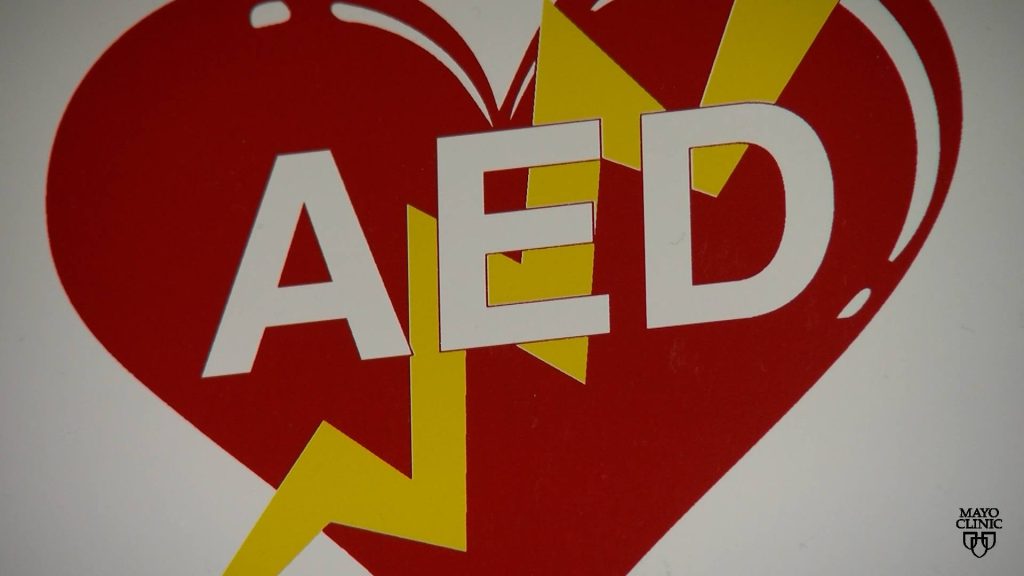-
Cardiovascular
Automated external defibrillators: How to use an AED

Sudden cardiac arrest is among the leading causes of death in the U.S., and this year alone, more than 350,000 people will experience cardiac arrest. In the hospital setting, defibrillators are used to deliver a jolt of electricity to the person's chest to get the heart beating again. Outside of the hospital, automated external defibrillators (AEDs) are portable devices that are used to revive someone suffering cardiac arrest. AEDs can be found in many public places and don’t require any special training to use. However, knowing where to look for them and how to use them could potentially help save someone’s life.
Dr. Alice Gallo De Moraes is chair of Mayo Clinic's Medical Emergency Response Subcommittee, which oversees all cardiac arrests and rapid response at Mayo Clinic in Rochester, Minnesota. She wants people to feel empowered to use these lifesaving devices.
Journalists: Broadcast-quality video (2:24) is in the downloads at the end of this post. Please courtesy: "Mayo Clinic News Network." Read the script.
"I really want people not to be afraid to use an AED because applying an AED to someone who has collapsed and doesn't have a pulse can actually save their life and save their life in a way that they won't have long-lasting consequences," says Dr. Gallo De Moraes.
How to use an AED
If someone has fainted and might need an AED:
- Check to see if the person is breathing and has a pulse.
- If you cannot feel a pulse and the person is not breathing, call for emergency help. If there are other people present, one person can call 911 while the other prepares the AED. If you're alone, call 911 or emergency services first to make sure help is on the way.
- Turn on the AED. The automated external defibrillator gives you step-by-step voice instructions. It will tell you how to check for breathing and pulse and how to position electrode pads on the person's bare chest.
- Deliver the shock. When the pads are in place, the AED automatically measures the person's heart rhythm and determines if a shock is needed. If it is, the machine tells the user to stand back and push a button to deliver the shock. The AED is programmed not to deliver a shock if a shock isn't needed.
- Start CPR. Begin CPR after the shock is delivered if CPR is still needed. The AED also will guide users through CPR. The process can be repeated as needed until emergency crews take over.
Dr. Gallo De Moraes says CPR is the most important thing to do after the shock of the AED is delivered.
"Once you start chest compressions, the AED will give you a countdown clock for two minutes, and it will remind you to stop compressions at two minutes so it can analyze again," says Dr. Gallo De Moraes.
She says if the audio instructions are followed, there’s no way to further hurt or injure someone by using an AED.
AED devices are often found in public places, such as schools, sports stadiums and airports, and are also carried by emergency medical services. AEDs should be in easily accessible and visible locations where they can quickly be retrieved in the event of a sudden cardiac arrest. Signs with the AED heart-shaped symbol should be located above where the devices are located.







